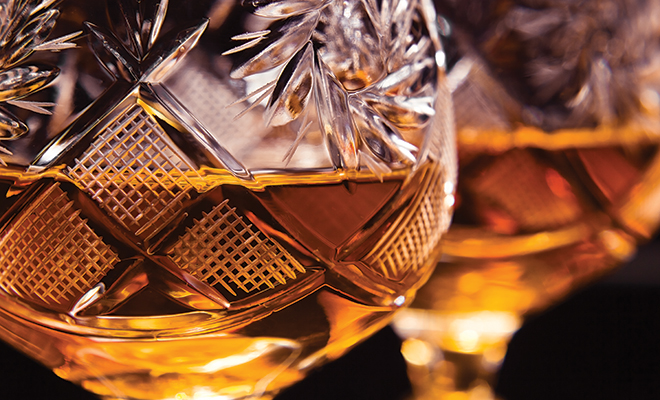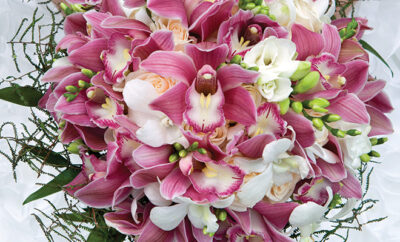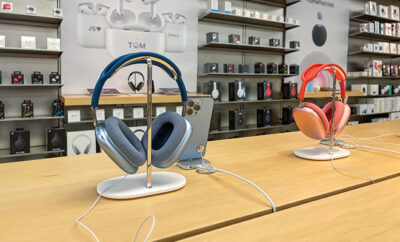
The Complexities of Decorative Glassware
Decorative glassware has been prized by humankind since early Middle Eastern artisans discovered how to manufacture it centuries ago. Decorative glass takes many forms.
Whether it is opaque or transparent, clear or colored, brittle or soft, durable or fragile, glassware is attractive to the eye and appeals to the senses. How to distinguish the different types of glass can be challenging, but if you love beautiful pieces of glassware, it’s worth learning the basics.
Cut Glass
As the name implies, this is glass that is “cut” by hand using metal or stone rotating wheels of different sizes. Cut glass can be combined with other techniques, but the technique usually refers to objects made only by cutting.
The first cut glass was produced in America in Manheim, Pennsylvania, in 1771. It closely resembled European glass. Around 1876, the Brilliant Period of glassware began and lasted until World War I. During the Brilliant Period, several important advances occurred in the glassmaking industry. Deposits of high-grade silica were found in America, allowing American glassmakers to create new formulas that made glass vastly superior to European glass. About the same time, natural gas replaced coal. Natural gas made it easier to control the glass-making process. Electricity replaced steam-driven cutting wheels. Many glass makers and cutters immigrated to America and helped the country dominate the glass-making industry.
Cut glass must include up to 40 percent lead oxide. This addition softens the glass enough that the cutting wheels don’t shatter the glass. All leaded glass is called “crystal;” cut leaded crystal, or cut glass, has a bell-like ring when tapped with the finger, a clarity and brilliance not found in pressed or molded glass, and a heaviness that is noticeable when compared with a plain glass of the same size.
Pressed Glass
To create pressed or molded glass, the molten glass is squeezed or pressed into a mold of the desired shape and, in most cases, pattern. The first pressed glass in America was made in the 1830s. Early American Pattern Glass, or EAPG, became hugely popular in the latter part of the 19th century, when the growing middle class wanted decorative Victorian objects for their homes. EAPG was made in “sparkling clear crystal.” Amber was immensely popular, but today collectors prefer blue and canary.
Depression glass, another type of pressed glass, became popular during the Depression Era. This mass-produced glass by Federal Glass, MacBeth-Evans and Hocking Glass was of poor quality. It contained air bubbles, heavy mold marks and other flaws. However, it came in beautiful colors and patterns. Frugal housewives sought out the pieces at Woolworth’s or purchased oatmeal or detergent brands that contained a piece. Serious collectors should be wary of reproductions and items that are scratched, chipped or cracked. Pieces in mint condition are hard to find since this glass was used daily in many homes.
Distinguishing Cut Glass from Pressed Glass
The first step is to look for mold lines. Most molded pieces have fairly obvious seams. Molded glass can be cut, but usually you want to know if the design was pressed or cut.
The second step is to inspect the inside of the piece. Sometimes, the interior has slight bubbles that can be seen. Examine the design for striations on the facets. Older glass was cut by hand and these marks can be seen. However, chemicals are used on modern glass to remove the striations.
Finally, shine a UV light on the glass. If the tint is bluish purple, it is lead glass and probably cut. If the tint is dull green, it is soda glass and probably molded.
Etched Glass
Glassware that has a design “etched” into the surface by acids is etched glass. The surface can be rough and frosted or smooth and translucent, depending on the way the glass was made and how long the glass was exposed to the acid bath. One popular method of making the design is to coat the glass piece with beeswax and draw the pattern with metal needles that penetrate the wax. The piece is then dipped in a hydrofluoric acid bath.
Etched glass is popular for making pieces with monograms and other designs. Hobbyists can buy etching creams at craft stores; these products contain strong fluorides and are dangerous so precautions must be taken. Sandblasting is yet another way to etch glass. High-pressure air is mixed with abrasive material and used with a stencil to cut away at the surface of the glass to achieve the frosted look. The longer the air is applied to one place on the glass, the deeper the cut. The cost and complicated procedure deter many hobbyists from using this decorative technique.
Collecting and creating decorative glass is an educational, enjoyable hobby for those with a discerning eye. ■
Sources: cutglass.org, thesprucecrafts.com and britannica.com.







